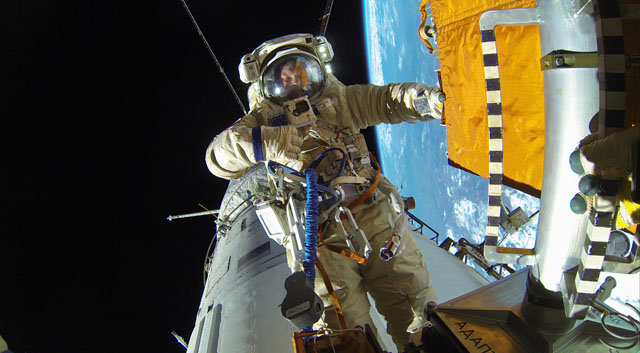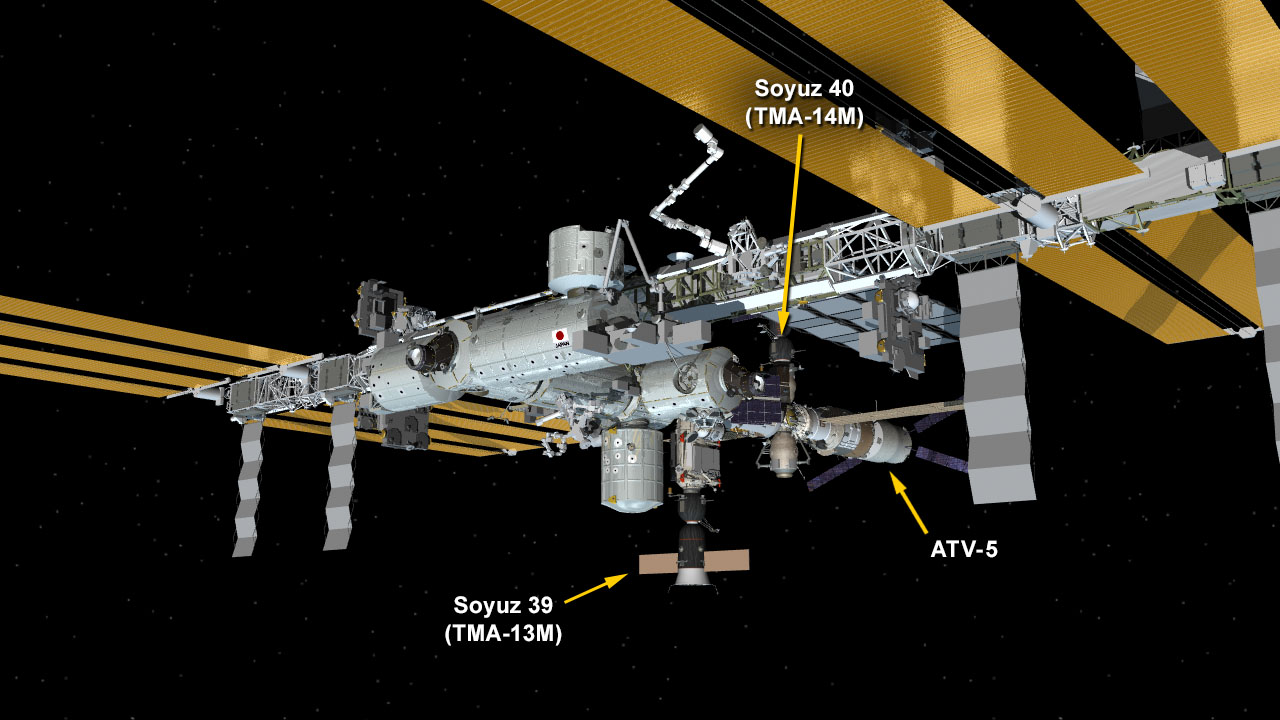Station Crew Readies for Busy Visiting Vehicle Traffic
The highway traffic to and from the International Space Station gets busy Saturday and the six crew members of Expedition 41 are working feverishly to manage the traffic flow.
Final packing of the commercial Space Exploration Technologies Corp (SpaceX) Dragon was completed and the hatch closed ahead of Saturday’s unberthing and departure. Release is planned for 9:56 a.m. EDT and splashdown in the Pacific Ocean west of Baja California is scheduled for about 3:30 p.m.
While the crew completed packing of experiment samples and equipment aboard Dragon for return to Earth, at NASA’s Wallops Flight Facility off the coast of Virginia, another commercial rocket – Orbital Sciences Corp.’s Antares with its Cygnus cargo craft – was rolled to the launch pad for final preparations leading to launch at 6:45 p.m. Monday. Plans are for Cygnus arrival at the station Sunday, Nov. 2, with berthing to the same Harmony module docking port that will be vacated by Dragon.
Two Russian cargo vehicles also will be making moves when Progress 56 undocks early Monday at 1:38 a.m., completing more than three months of service at the station. It will undergo several weeks of engineering tests by Russian flight controllers before being deorbited over the Pacific on Wednesday, Nov. 19. That departure frees the Pirs Docking Compartment for arrival of the next Russian cargo vehicle, Progress 57, which is set for launch at 3:09 a.m. Wednesday, Oct. 29, with docking to Pirs six hours later at 9:09 a.m.
Three of the crew members also are beginning preparations to return home after 165 days in space. Expedition 41 Commander Max Suraev and Flight Engineers Reid Wiseman and Alex Gerst will return home aboard their Soyuz TMA-13M spacecraft on the evening of Sunday, Nov. 9.
That leaves the other three crew members to transition to Expedition 42, which will be led by Barry Wilmore. He will command the expedition that includes Alexander Samokutyaev and Elena Serova until next March. They’ll enjoy a Thanksgiving delivery of three more crew members – Anton Shkaplerov, Samantha Cristoforetti and Terry Virts – on Sunday, Nov. 23.
› Read this week’s overview from the lead station increment scientist
› Read more about Cygnus’s upcoming launch
› Read more about the Expedition 41 crew
Flight Engineer Barry Wilmore unpacks cargo Oct. 11 from the SpaceX CRS-4 Dragon commercial space freighter.
Photo Credit: NASA









 NASA Television will provide live coverage of the departure of the SpaceX Dragon spacecraft from the International Space Station beginning at 9:30 a.m. EDT. Dragon was detached from the Earth-facing side of the station’s Harmony module earlier this morning. Mission control will maneuver Dragon into place then turn it over to Expedition 41 robotic arm operators Reid Wiseman and Barry Wilmore of NASA for release, scheduled for approximately 9:57 a.m.
NASA Television will provide live coverage of the departure of the SpaceX Dragon spacecraft from the International Space Station beginning at 9:30 a.m. EDT. Dragon was detached from the Earth-facing side of the station’s Harmony module earlier this morning. Mission control will maneuver Dragon into place then turn it over to Expedition 41 robotic arm operators Reid Wiseman and Barry Wilmore of NASA for release, scheduled for approximately 9:57 a.m.